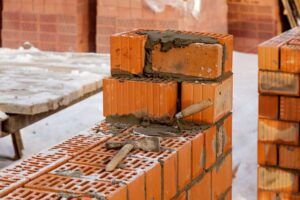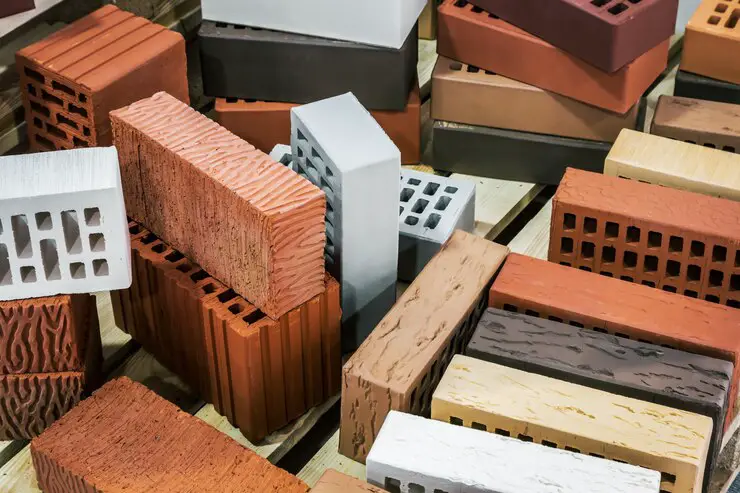Sustainable Bricks and Tiles: The Future of Construction
The Need for Sustainable Building Materials in the Construction Industry
The construction industry is undergoing a significant shift towards sustainability, driven by the urgent need to reduce our environmental impact. One crucial aspect of this shift is the adoption of sustainable building materials. Traditional construction materials, such as bricks and tiles, have long been associated with high carbon emissions and resource depletion.
However, with the emergence of sustainable alternatives, such as sustainable bricks and eco-friendly tiles, the construction industry now has an opportunity to make a positive change. Sustainable bricks are manufactured using recycled materials or renewable resources, reducing their carbon footprint significantly. These bricks not only offer comparable strength and durability but also contribute to waste reduction.
Similarly, eco-friendly tiles are designed to minimize environmental impact throughout their lifecycle. They are made from recycled or low-impact materials that require less energy and water during production. Additionally, these tiles often incorporate innovative technologies that enhance energy efficiency within buildings.
By embracing sustainable building materials like these, the construction industry can play a vital role in mitigating climate change while promoting responsible resource management. Not only do these materials help reduce carbon emissions and waste generation, but they also inspire innovation in design and construction practices.
In conclusion, the need for sustainable building materials in the construction industry has never been more critical. By incorporating sustainable bricks and eco-friendly tiles into projects, we can create structures that are not only aesthetically pleasing but also environmentally responsible. It’s time for the industry to prioritize sustainability and pave the way for a greener future in construction.

The Advantages of Using Sustainable Bricks and Tiles in Building Projects
In today’s world, where sustainability and environmental consciousness are becoming increasingly important, the use of environmentally friendly building materials is crucial. One such material that is gaining popularity in construction projects is sustainable bricks and tiles. These innovative building materials offer a range of advantages that go beyond just aesthetics.
One of the key benefits of using sustainable bricks and tiles is their positive impact on the environment. Unlike traditional bricks, which are often made from clay or concrete, sustainable bricks are manufactured using recycled or renewable materials. This significantly reduces their carbon footprint and helps to conserve natural resources.
Furthermore, sustainable bricks and tiles contribute to energy-efficient construction. They have excellent insulation properties, which can help regulate temperature within buildings and reduce the need for excessive heating or cooling systems. This not only leads to energy savings but also lowers greenhouse gas emissions.
Another advantage of using sustainable bricks and tiles is their durability. These eco-friendly materials are designed to withstand harsh weather conditions and have a longer lifespan compared to conventional building materials. This means fewer repairs and replacements over time, resulting in cost savings for builders and homeowners alike.
Additionally, sustainable bricks and tiles offer a wide range of design options without compromising on quality or aesthetics. They come in various colors, textures, shapes, and sizes, allowing architects and designers to create visually appealing structures while still prioritizing sustainability.
In conclusion, the advantages of using sustainable bricks and tiles in building projects are undeniable. From reducing carbon footprint to promoting energy efficiency and offering durability with aesthetic appeal – these environmentally friendly materials provide a win-win solution for both builders and the planet as a whole. By embracing sustainability in construction practices through the use of these innovative materials, we can pave the way toward a greener future for generations to come.
Durability and Longevity
When it comes to sustainable construction, durability and longevity are crucial factors to consider. Building materials that can withstand the test of time not only reduce the need for frequent replacements but also contributes to a more sustainable future.
One such example is sustainable brick durability. Traditional bricks have been used for centuries due to their strength and longevity. However, advancements in technology have led to the development of eco-friendly bricks that are not only durable but also environmentally friendly. These sustainable bricks are made from recycled materials or use innovative manufacturing processes that minimize waste and carbon emissions.

Similarly, long-lasting tiles play a significant role in sustainable construction. Tiles made from high-quality materials such as ceramic or porcelain can last for decades with proper maintenance. This reduces the need for frequent replacements, saving resources and reducing waste.
Considering the lifespan of sustainable building materials is essential in creating structures that stand the test of time while minimizing environmental impact. By investing in durable and long-lasting materials, we can ensure that our buildings remain functional and aesthetically pleasing for years to come, contributing to a more sustainable and resilient future.
Innovations in Sustainable Brick and Tile Technologies
The world is witnessing a growing demand for sustainable building materials, prompting innovations in eco-friendly brick and tile technologies. These advancements are revolutionizing the construction industry by offering greener alternatives that minimize environmental impact without compromising on quality or durability.
One of the key areas of focus is eco-friendly brick technologies. Traditional brick manufacturing processes often involve high levels of energy consumption and carbon emissions. However, recent advancements have introduced sustainable alternatives that utilize recycled materials, such as fly ash or reclaimed aggregates, reducing the reliance on virgin resources. Additionally, innovative techniques like modular construction and interlocking bricks not only enhance sustainability but also improve efficiency in terms of time and cost.

Similarly, sustainable tile manufacturing has also seen significant progress in recent years. Manufacturers are now adopting environmentally friendly practices throughout the entire production process, from sourcing raw materials to reducing water usage and implementing energy-efficient kilns. Furthermore, advancements in digital printing technology have allowed for intricate designs to be applied onto tiles using non-toxic ink, eliminating harmful chemicals traditionally used in the glazing process.
These innovations in sustainable brick and tile technologies offer a promising future for environmentally conscious construction projects. By incorporating these eco-friendly materials into their designs, architects, and builders can contribute to a more sustainable built environment while maintaining aesthetic appeal and structural integrity. As we continue to prioritize sustainability, it is crucial to embrace these advancements as they pave the way toward a greener future for the construction industry.
The Role of Architects and Builders in Promoting the Use of Sustainable Bricks and Tiles
Architects and builders play a crucial role in promoting the use of sustainable bricks and tiles in the construction industry. As sustainability practices become increasingly important, it is essential for these professionals to prioritize designing with green building materials.
Sustainable bricks and tiles are made from recycled or renewable materials, reducing the carbon footprint associated with their production. Architects have the power to incorporate these eco-friendly materials into their designs, ensuring that buildings are not only aesthetically pleasing but also environmentally responsible.
By selecting sustainable bricks and tiles, architects can contribute to reducing waste, conserving energy, and minimizing the overall environmental impact of construction projects. Additionally, they can inspire clients and other industry professionals to embrace sustainable practices by showcasing the benefits of using these materials.

Builders also play a pivotal role in promoting sustainability. They have the responsibility to source and utilize sustainable bricks and tiles during construction. By doing so, they demonstrate their commitment to creating environmentally conscious structures that align with modern-day sustainability goals.
In conclusion, architects and builders have a significant role in driving the adoption of sustainable bricks and tiles within the construction industry. By incorporating green building materials into their designs and construction practices, they contribute to a more sustainable future for our built environment.

